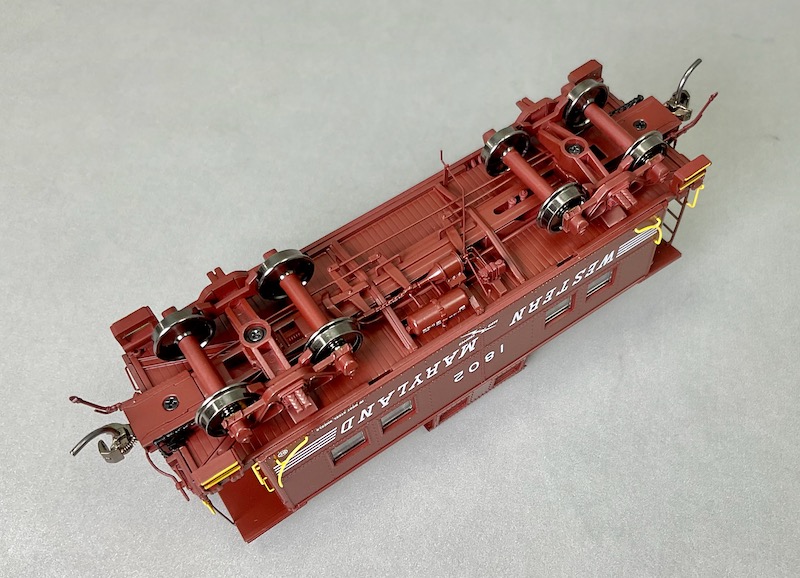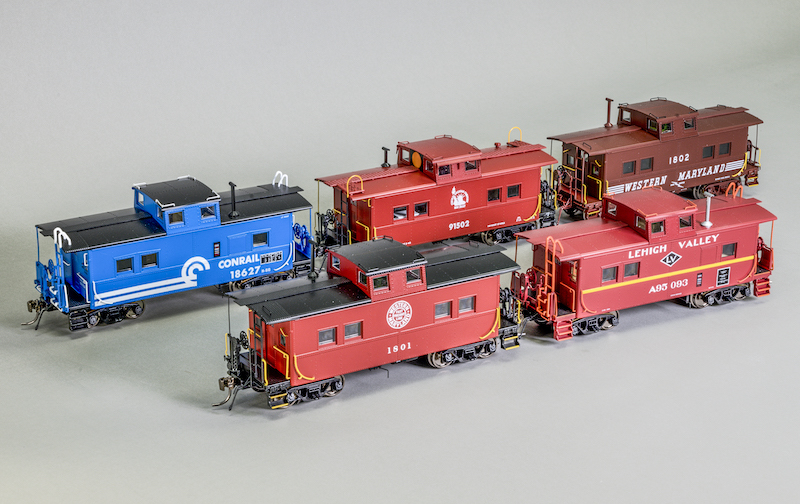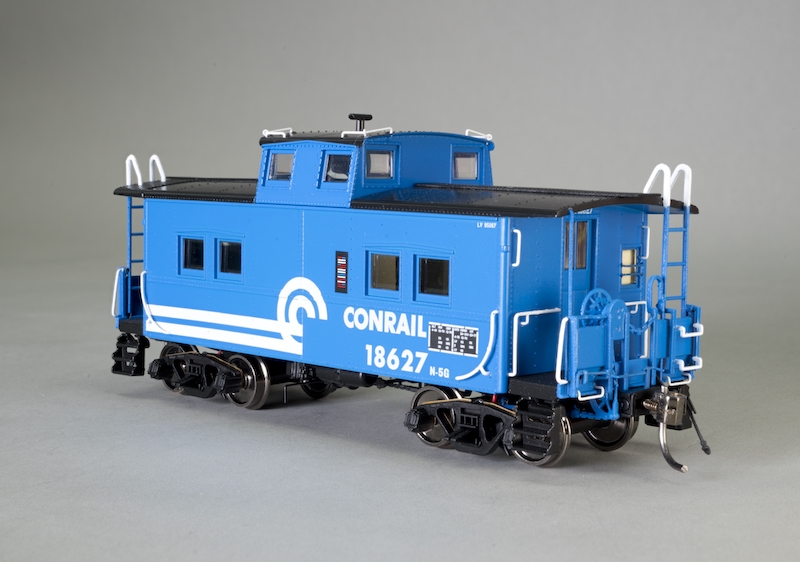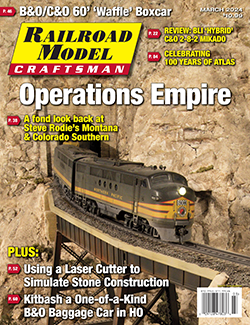 Story and Photos by Hunter Hughson
Story and Photos by Hunter Hughson
During the early 20th century, the teens and twenties were decades of rapid progress in railroad equipment design. Equipment became more standardized as steel was fast becoming the preferred material for the fabrication, not just for sub-assemblies but for entire cars. As such, we can look back at this period and see the earliest evidence of designs and practices that would endure for decades. Cabooses are no exception to this trend, and we can see how the Pennsylvania Railroad was instrumental in advancing new ideas that would contribute to the move toward improved and standardized equipment design practices.
It has been said that the so-called “Northeastern” design caboose had its inception in the Pennsylvania Railroad’s N-5 class, but in order to draw a clear line back to that design we must look closer at the history of cabooses on the Philadelphia & Reading. Primary documents point to the fact that, as early as 1915, P&R was looking to replace its more-or-less standardized four-wheel bobber cabooses. By 1920, internal communications at P&R point to an interest in the all-steel cabooses that were in use on the Cumberland Valley, which were built in two orders by PRR at Altoona in 1916 and 1918. These were, in fact, PRR N-5 designs. By 1923, P&R was designing its own caboose based on the successful application of all-steel construction on other roads, and they looked to a United States Railroad Administration (USRA) design for guidance. What’s interesting is that the floor plan for a 1918 USRA design for a “standardized” caboose is identical to a PRR N-5, although it should be noted that the exteriors have few similarities. It turns out that the P&R’s new eight-wheel all-steel “standard” caboose was nearly an exact copy of the USRA design.
By 1924, the P&R became Reading Company, and from that time forward all new cabooses would be constructed according to the new “standard” premised upon the USRA design, which itself was, in many ways, a derivative of the PRR N-5 caboose. This design would remain in production until 1948, and in that time Reading built 295 copies for their own purposes. The story doesn’t end here, because during that time period, this was the basis for steel cabooses ordered or built by Western Maryland, Lehigh Valley, Pittsburgh & West Virginia, Central Railroad of New Jersey, Lehigh & Hudson River, and Lehigh & New England, accounting for a total of 618 cars. The geographical locale of these railroads was likely the basis of the colloquial name given to the “Northeastern” caboose.
With so many railroads procuring the Northeastern caboose, it should come as no surprise that they were built in several different shops, and therefore there would be minor and sometimes major variations from one road to the next while retaining the overall dimensions and design.
The Model
Rapido Trains has brought us an HO model of the Northeastern caboose, and while it’s not the first time this prototype has been represented, it is the first model where the manufacturer has been attentive to the variations in appliances and equipment that appeared on each road, and there are many other features and details executed here which have never existed on past renditions.
Out of the box, the sample models have fine and separate detail parts, crisp and accurate graphics, and quality construction. At 2.4 ounces, the model’s weight is under that which is recommended by the NMRA, but testing revealed no shortcomings in performance. The trucks roll nicely, which is a noteworthy accomplishment given the fact that the model also uses track power for internal illumination. At first glance, truck swivel appears to be inhibited by wires that pass from the truck bolsters to the interior of the car, but testing reveals that a car so short needs very little truck swivel. The models were tested on 24” radius curves and through a No. 5 turnout and performed flawlessly….






